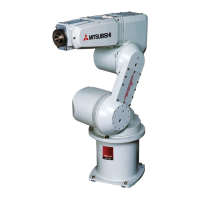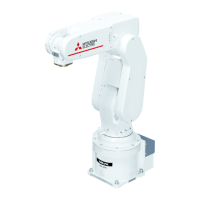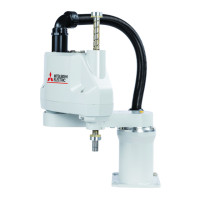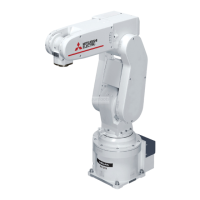
Do you have a question about the Mitsubishi Electric MELFA RV-2FR-D and is the answer not in the manual?
| Payload Capacity | 2 kg |
|---|---|
| Number of Axes | 6 |
| Repeatability | ±0.02 mm |
| Controller | CR800-D |
| Protection | IP40 |
| Installation | Floor, Wall, Ceiling |
| Type | Robot Arm |
| Power Supply | 200-240V AC |
Essential safety guidelines and warnings for operating the robot arm.
Explains the structure and content of the various manuals provided.
Details how to verify all standard configuration parts are present.
Covers unpacking, transportation, grounding, and controller connection.
Explains manual movement (jog operation) and teaching pendant setup.
Details the installation and parameter setting for axis operating range changes.
Guides on installing the solenoid valve set for pneumatic control.
Covers the installation of hand input and output cables.
Explains the installation of forearm and base external wiring sets.
Classifies inspections into daily and periodic, and lists their purposes.
Lists daily and periodic inspection items with remedies and schedules.
Details procedures for robot arm structure, cover removal, timing belt, and lubrication.
Covers inspection, replacement, tension measurement, and typical damage of timing belts.
Explains lubrication positions and specifications for various robot axes.
Details the process for replacing the controller and robot arm backup batteries.
Defines overhaul and provides guidelines based on servo-on time.
Lists consumable and spare parts required for maintenance and repair.
Outlines different methods for setting the robot origin and when they are required.
Details steps for inputting origin data via the teaching pendant.
Explains origin setting using a calibration jig for each axis.
Describes using ABS marks for accurate origin setting and reproduction.
Outlines how to set a custom origin position using jog operation.
Instructions on how to record the confirmed origin data onto a label.
Describes how to release brakes using an emergency power supply for safe positioning.
Explains configuration flags that indicate robot posture (e.g., RIGHT/LEFT, ABOVE/BELOW).











